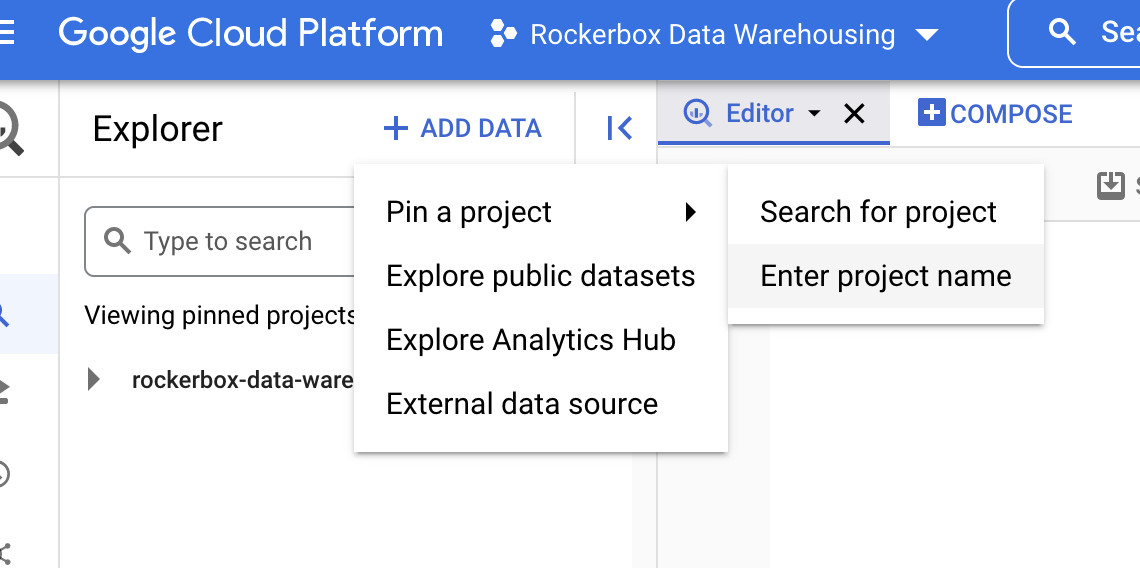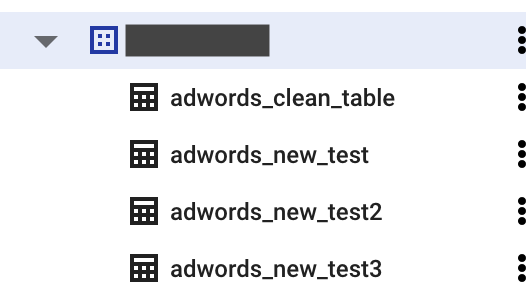Warehousing: Getting Started - BigQuery
Contact Rockerbox to Set Up BigQuery
BigQuery setup via the Rockerbox UI is temporarily not available. Contact your Rockerbox CSM to take you through the setup.
If you have the following, it will expedite the setup:
- The BigQuery region (ex: us-central-1) you are running in. Due to a BigQuery limitation, multi-region datasets are not supported.
- The datasets you want to sync. For Rockerbox data, include both the table and conversion(s) to sync.
- The GCP user email(s) and/or service account(s) that will be running queries against the datasets. You can list more than one.
This page will guide you through enabling the BigQuery integration for the first time.
Requirements
In order to successfully to set up your BigQuery integration, you will need:
- A Google Cloud Platform (GCP) account
- A project created with BigQuery resource enabled
- Desired region for your bucket and BigQuery to live in
- A user with admin access to the project’s BigQuery resource
Steps to Complete the Integration
- Head over to the Warehousing setup page
- Select BigQuery
- Click Connect to BigQuery
From there, you will take the following steps to complete your BigQuery integration:
- Select your BigQuery Region
- Provision Permissions to Rockerbox BigQuery Data Warehouse
- Select the schema(s) to sync
- Access Your Data
1. Enter BigQuery region
Rockerbox needs your preferred GCP region in order to complete setup. Select your GCP region.
Multiregion NOT Supported
Our BigQuery warehousing integration requires a specific region. We cannot support multiregion.
Please check Google documentation for further information: https://cloud.google.com/bigquery/docs/locations#multi-regions
2. Provide Permissions to Rockerbox BigQuery Data Warehouse
Provide the email associated with your GCP BigQuery resource.
3. Select the Schema(s) to Share
In this step, you'll select the Data Schemas you want Rockerbox to share with your BigQuery instance.
- For Platform Data, select the platform(s) you want to sync over. Most clients will select all platforms they're actively spending on.
- For Rockerbox Data, first select the Conversion, and then the dataset to share. You can select multiple conversion-dataset combinations.
- For both Platform Data and Rockerbox Data, you can update the default Table Name to something more descriptive.
Once you've selected each dataset, be sure to click Sync this dataset to begin the share.
Backfilling Historical Data
For Platform Data, no additional steps are required for backfilling. You will be able to see historical data after setting up the share.
For Rockerbox Data and for each Conversion, Rockerbox will sync data back to the First Reporting Date. If you did not set a First Reporting Date for a Conversion, then Rockerbox will sync one day of data.
Note: this backfill may take 24 hours to complete.
4. Access Your Data
- In BigQuery, click on ADD DATA and enter project name:
rockerbox-data-warehousing

rockerbox-data-warehousingwill be pinned to your sidebar and show all tables you requested to sync

- Run a query.
- The following format of the table to query will be
rockerbox-data-warehousing-{advertiser_name}-{table_name} - You can also click on a table and open a query within BigQuery
BigQuery Table Limitations
The MTA and Conversions schemas have a limitation for BigQuery only. The columns with nested data
url_parameters,utm_parameters, andadditional_attributeswill not automatically be updated with new column data. For example, if previously there are 5 url parameters and then a 6th is added, the 6th will not appear without manual intervention by Rockerbox.Please contact Rockerbox if there are missing columns in the
url_parameters,utm_parameters, andadditional_attributesfields that you need in your warehouse tables.
Updated about 2 years ago
